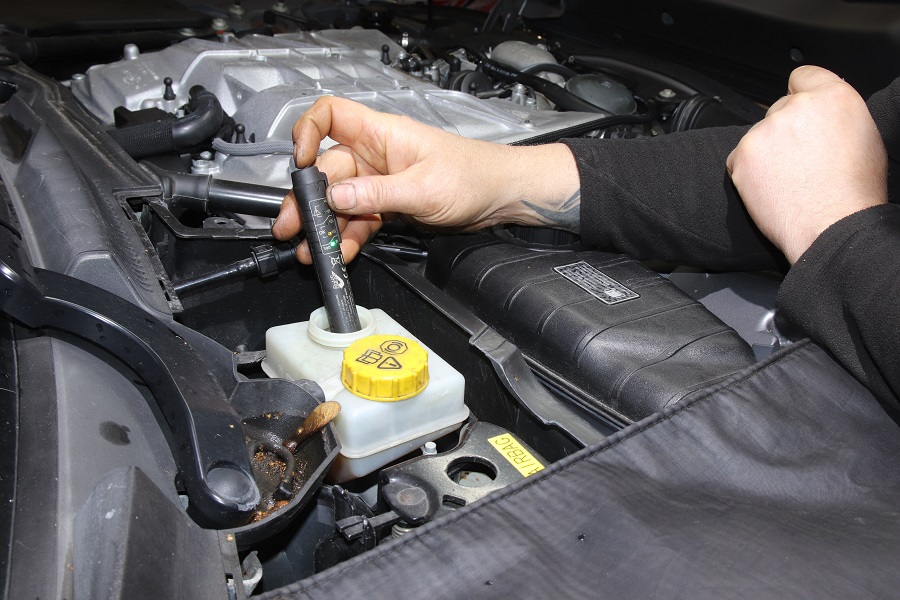Discover all you need to know about brake fluid, from boiling points to the limitations of performance variants. Here’s our full brake fluid guide.
Hydraulic brake circuits have been in use for several decades, replacing rod-operated brakes over 70 years ago. Despite the rapid development of electronic parking brakes, the system for the foot brake remains hydraulically operated for now. This liquid-filled system has evolved with servo-assistance, wear indicators, and anti-lock systems that we now expect as standard fitment. Knowing about brake fluid will help with your understanding of car maintenance and keep you motoring along safely.
Amidst all this emerging technology, though, does anyone understand the figures for wet and dry DOT ratings? Or what brake fluid is made from and the difference between silicone and synthetic? If that’s something you need to catch up on, read further.
What is brake fluid made of?
Most hydraulic brake fluid is glycol-ether based, which is a non-compressible liquid. This is essential for brakes where a press of the brake pedal must ensure the fluid operates the calipers and/or wheel cylinders. Should it undergo compression (this is what happens to water), then the brake pedal may feel spongy and inconsistent. In other words, the brake pedal doesn’t efficiently transfer the force you apply through to the brakes.
However, instead of talking about compression of fluid, brake fluid standards are concerned with its viscosity. This is its thickness. International standards such as the SAE, FMVSS, ISO and JIS quote a minimum viscosity at 100⁰C (212 degrees Fahrenheit) and a maximum viscosity at -40⁰C. Brake fluid manufacturers have to comply with specific viscosity ratings for these two extremes of temperature. They also have to comply with boiling points, which we’ll explain later.
Paint damage
Glycol-ether based brake fluid can damage paintwork if a small or large amount comes into contact with it. It’s not as bad as paint stripper, but it marks paintwork and is time-consuming and potentially expensive to repair.
Silicone-based brake fluid is an alternative to glycol-ether and it doesn’t damage paintwork. However, some people have found it doesn’t provide the same firm feeling of braking when pressing the foot brake.
Water absorption
Glycol-ether based brake fluid is hygroscopic, which means it absorbs water. This can cause corrosion of steel components inside the braking system, such as the pistons inside a brake caliper. Some brake fluid contains anti-corrosion additives to help prevent this.
Water in the brake fluid can adversely affect braking performance. Especially if the temperature of the brake fluid rises above the boiling point of water at 212 degrees Fahrenheit (100°C). If the water inside the brake fluid boils, the brake pedal may feel spongy, suggesting that the braking system has lost pressure.
Silicone-based brake fluid is hydrophobic, which means it doesn’t absorb or mix with moisture. However, if water contaminates the brake fluid, it settles at a low point, which could be at a brake caliper. That can mean corrosion still occurs and the separated water can boil if the brakes are too hot.
What are the different types of brake fluid?
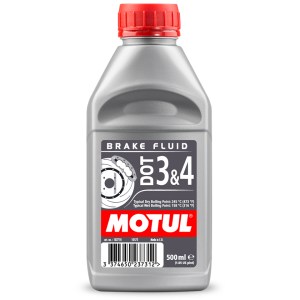
DOT-ratings
The American Department of Transportation (DOT) has devised a number of ratings for brake fluid. They are based on two values concerning boiling points, which is when the brake fluid loses its efficiency. One of them is the brake fluid’s dry boiling point, measured when the fluid is fresh, and known as the minimum ERBP (Equilibrium Reflux Boiling Point).
The other is known as a wet boiling point, which occurs after exposure to air and moisture from the surrounding environment. This is known as the minimum WERBP (Wet Equilibrium Reflux Boiling Point) and is measured when the fluid contains 3.7% moisture.
For DOT 3 brake fluid, the minimum ERBP is 401 degrees Fahrenheit (205⁰C). For the same brake fluid that contains moisture (wet), the minimum boiling point is 284 degrees Fahrenheit (140⁰C).
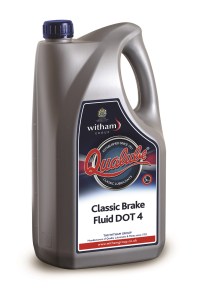
DOT 4 brake fluid’s boiling points are slightly higher – 446 degrees Fahrenheit (230⁰C) for fresh (dry) fluid and 311 degrees Fahrenheit (155⁰C) for wet.
DOT 5 only covers silicone-based brake fluid, with a fresh boiling point of 500 degrees Fahrenheit (260⁰C). For the same brake fluid in a wet state, it’s 356 degrees Fahrenheit (180⁰C).
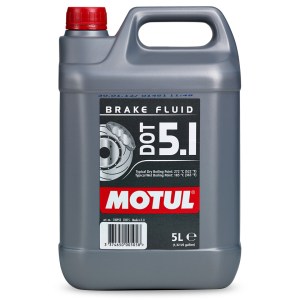
DOT 5.1 is the highest rating for glycol-ether based brake fluid, and requires the minimum boiling point of fresh fluid to be 518 degrees Fahrenheit (270⁰C). Meanwhile, wet fluid rated at DOT 5.1 needs to have a minimum boiling point of 374 degrees Fahrenheit (190⁰C).
Remember that the boiling points we’ve mentioned are only a minimum value, so some brake fluid might have a much higher boiling point.
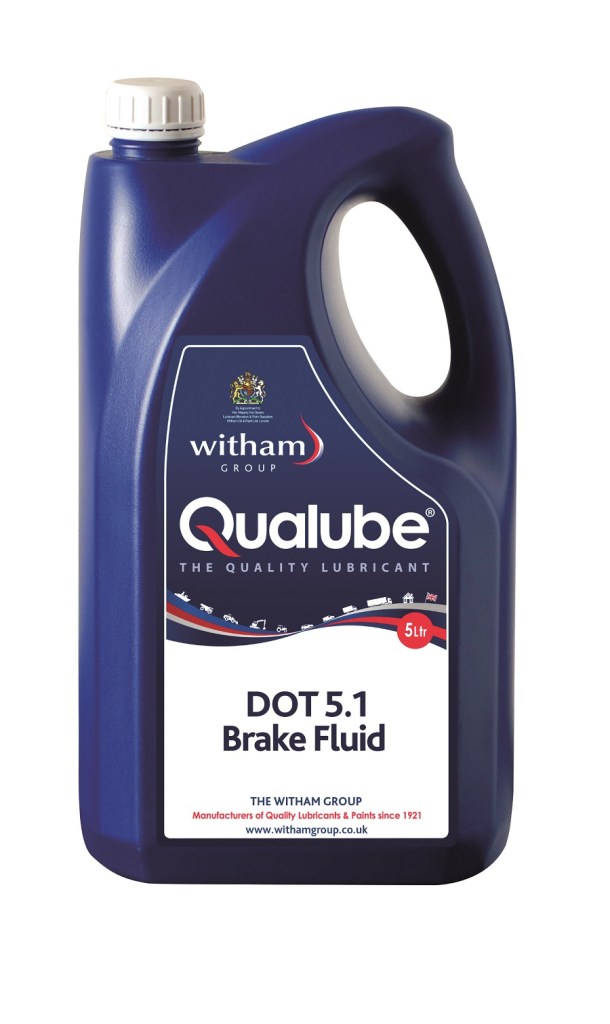
Do DOTs help?
If you want the best performance from your brakes, should you only use DOT 5.1? In theory, yes, but remember that other components can fail under extreme temperatures. Brake pads may fade under hard braking. Brake rotors can warp under extreme heat. Rubber flexi-hoses can expand and reduce braking pressure. Using brake fluid with the highest boiling point won’t help to preserve these other brake components.
Can you mix different types of brake fluid?
Mixing different DOT-rated brake fluid isn’t recommended, especially glycol-ether and silicone-based fluids. It’s better to stick with one brand of brake fluid to ensure you know what the boiling points should be. So, if you are refreshing the brake fluid with a different DOT-rating, use plenty of new fluid. This will ensure the old fluid is fully flushed through with the new stuff.
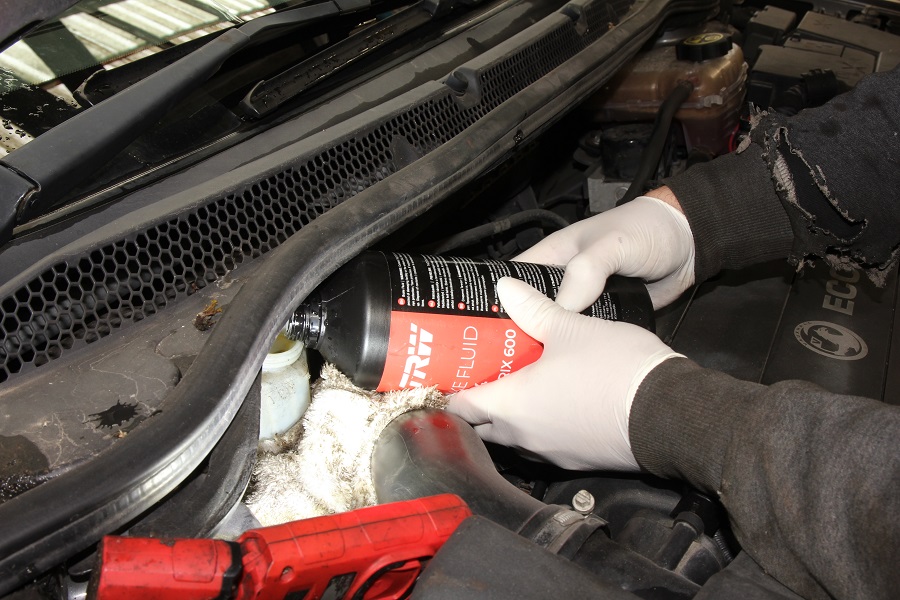
When do I need a brake fluid change?
You should ideally refresh your car’s brake fluid every couple of years, regardless of how often the vehicle is used. The moisture that either becomes absorbed or collected in the hydraulic system needs to be removed. Refreshing the brake fluid is the best way to do this, and you can read our guide on how to change brake fluid here.
There are a number of ways to measure the moisture content in the brake fluid. This helps to determine whether the brake fluid needs changing, but we still recommend changing it every two years.
A brake fluid tester will help to measure the moisture content in the brake fluid. They can cost under a tenner at the bottom end of the market, and are usually battery-operated. LED lights help to show the level of moisture inside the sample of brake fluid that’s being tested. However, it doesn’t measure the brake fluid’s boiling point, which is perhaps more important.

